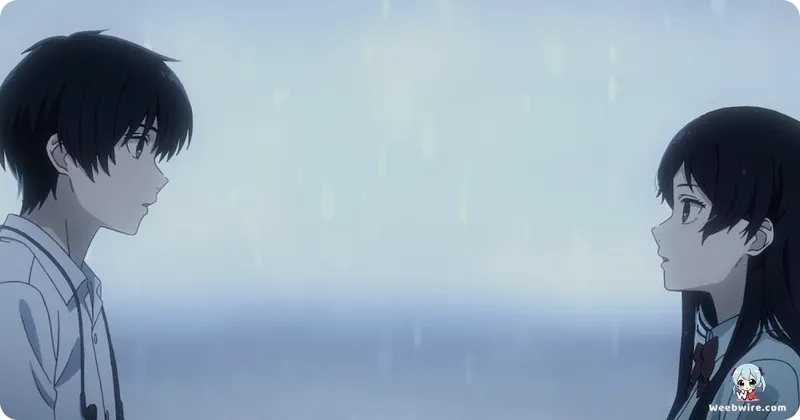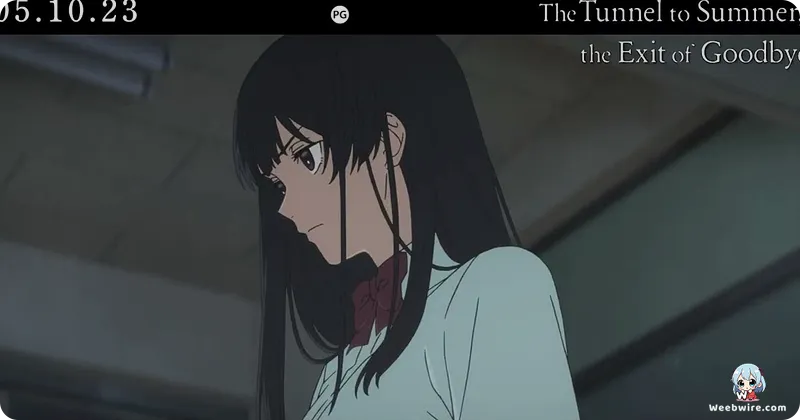From Award-Winning Novel to Cinematic Triumph: Unpacking the Mythological Roots of The Tunnel to Summer, the Exit of Goodbyes

The Tunnel to Summer, the Exit of Goodbyes (2022) is a film that moves beyond the conventions of typical supernatural romance. It is a critically respected work built upon a foundation of deep literary prestige and classical Japanese mythology. The narrative centers on Kaoru Tono and Anzu Hanaki, two high school students who discover the mysterious Urashima Tunnel. This spectral location promises to grant their most profound desires, but it extracts a significant cost: temporal displacement. Minutes spent inside the tunnel equate to weeks or even years lost in the outside world, immediately establishing a high-stakes premise focused on sacrifice and profound longing.
Literary Foundation and Production Pivot
The source material, a singular light novel volume penned by Mokune Hoshi, provided the rigorous structural integrity for the adaptation. Hoshi’s work was recognized for its exceptional narrative strength and innovative concept, earning the coveted Gagaga Award at the 13th Shogakukan Light Novel Awards in 2019. This prestigious accolade signaled the story's inherent quality, ensuring that the anime adaptation would be approached with high expectations and a deep respect for its exploration of grief, the nature of time, and profound yearning.
Bringing this delicate story to life was Studio CLAP, a choice that highlighted the studio's remarkable creative versatility. Having previously been recognized for the hyper-kinetic, meta-filmmaking satire Pompo the Cinephile, Studio CLAP executed a dramatic artistic pivot. Director Tomohisa Taguchi and his team successfully traded Pompo’s frenetic energy and neon aesthetic for the subdued, introspective, and intensely atmospheric world of a Japanese summer.

Mythology and Visual Design
The film’s visual design is widely praised for its masterful execution, utilizing detailed rendering of rural landscapes. In this setting, the humid air, the sound of cicadas, and running water become integral to the mood, amplifying the characters' isolation and the sense of time suspended.
Crucially, the central plot mechanism, the Urashima Tunnel, is not a mere fantasy invention. Its time-dilation effect is a direct and clever homage to the ancient Japanese legend of Urashima Taro, the fisherman who returns from the Dragon Palace to find centuries have passed. This mythological grounding provides instant cultural weight, transforming the tunnel into a modern cautionary tale about the cost of fulfilling desire. The film’s emotional depth is further enhanced by its embrace of mono no aware, the philosophical appreciation for the beautiful, yet fleeting, nature of existence. This melancholy is visually reinforced through the evocative use of light and shadow, translated beautifully by character designer Tomomi Yabuki from Kuka's original clean art style.
Casting and Emotional Realism
Adding to the film's grounded realism was the intentional casting of live-action actors Ouji Suzuka (Kaoru) and Marie Iitoyo (Anzu) for the lead voice roles. This decision aimed for a naturalistic, subtle emotional delivery over stylized anime performance, successfully anchoring the fantastical conflict in genuine, relatable human emotion. This focus on understated performance was crucial in making the heavy themes of sacrifice and temporal consequences resonate deeply with the audience, solidifying the film's status as a memorable and technically impressive adaptation.
Credits
The Tunnel to Summer, the Exit of Goodbyes
Author
Mokune Hoshi
Cover Art
Kuka
Studio
CLAP
Publisher
Shogakukan
Producers





